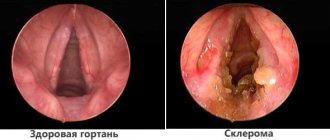Modern medicine is simply a storehouse of various methods for studying the human body. Of course, it is stupid to refute the fact of their usefulness in specific cases. However, some types of diagnostics seem meaningless, if only because of their obscurity. Thus, PCR tests, which have become widespread in recent years, are heard by many people, but few know what they are.
Today we will pay attention to the essence of this examination for pregnant women, considering its basic features and procedure. Interesting? Then be sure to read the material below to the end.
STIs during pregnancy
Sexually transmitted diseases or infections (STDs, STIs) are classified as sexually transmitted diseases of an infectious nature. Pathologies are transmitted during unprotected sexual contact with an infected partner and cause inflammation of the urogenital tract and pelvic organs.
STDs during pregnancy are especially dangerous, as there is a risk of infection spreading from the vagina to the uterine cavity, or directly to the fetus through the bloodstream. Doctors recommend that women take a responsible approach to pregnancy planning and avoid promiscuity during gestation to avoid infection.
Purpose of PCR tests: features and situations
In gynecology, the PCR examination method is prescribed in the following situations:
- With the development of an acute disease that is transmitted exclusively through sexual contact.
- If you suspect a chronic course of such a disease.
- To determine the causes of chronic inflammation of the genitourinary system of a pregnant woman.
- During a difficult pregnancy.
- To find out the reasons that led to the appearance of infertility in a woman.
- To determine a woman's sensitivity to antibiotics.
- To control the process of antibiotic treatment in gynecology of a pregnant woman.
In order to identify infectious diseases, including sexually transmitted ones, PCR analysis in gynecology is gaining great importance. It allows you to effectively and efficiently study not only common diseases, but also completely unknown (or little-known) sexual diseases of women during pregnancy. Gynecology is the main area of application of PCR diagnostics.
PCR smears are used to diagnose diseases such as:
- Viral hepatitis.
- AIDS.
- Diphtheria and salmonellosis.
- Toxoplasmosis.
- Cytomegaly.
A good example confirming the maximum effectiveness of this examination method is the detection of the hepatitis virus. It cannot be determined by other methods, since only a PCR smear is appropriate. The results obtained from this analysis have maximum reliability.
PCR pregnancy smear does an excellent job of identifying parasitic microorganisms that can stay in the human body for a long time without revealing their existence.
In order to detect the virus in the mother’s body, a pregnancy smear is used for PCR. In order to protect yourself and your unborn child, you need to know how cytomegalovirus is transmitted.
The method of transmission of infection can occur by airborne droplets, sexually and, of course, from mother to child during pregnancy, as well as during childbirth, and during breastfeeding. This is why it is so important to take a pregnancy smear for PCR analysis. The sooner an infection is detected, the sooner it can be suppressed with medications.
The incubation period can last up to two months. Symptoms are similar to a cold: chills, high fever, headaches and muscle pain, bronchitis. As the disease progresses, damage to organs and tissues may occur, and genital pathologies may develop.
Symptoms of infections and viruses
Symptoms of an STI can appear in a patient for two reasons: against the background of a primary infection or during an exacerbation of a chronic infection. Transmission of the infection occurs through sexual intercourse. A household route of infection is unlikely, since STD pathogens do not survive well in environmental conditions, and infection requires a large number of microbes, since single pathogens are killed by local immunity.
An exacerbation of the disease occurs due to physiological changes in the woman’s body. At certain times, in particular already in the first trimester, the patient’s hormonal levels change and the activity of the immune system decreases. This is necessary for the normal development of the child and is the norm. A side effect of this change is the exacerbation of chronic infectious pathologies.
Sexually transmitted diseases are often asymptomatic, which is very dangerous, since during pregnancy they inevitably worsen and pose a threat to the health and life of the fetus.
Infections manifest themselves in different ways, it all depends on the pathogen. But there are a number of alarming signs with which a pregnant woman needs to immediately contact a gynecologist and be diagnosed for STIs:
- Abnormal discharge from the genital tract - lumps, very abundant, too thick or thin, green, yellow, bloody, with an unpleasant odor.
- Itching and burning in the vagina and labia.
- Irritation and redness of the genitals.
- Cutting and pain during urination, frequent urge to go to the toilet.
- Pain in the lower abdomen of any nature.
- Pain and burning, dryness during sexual intercourse.
- Any rash on the genitals and perineum, even single and asymptomatic.
- Enlarged lymph nodes in the groin, increased body temperature.
The severity of symptoms depends on the form of the pathology. Thus, in the acute stage, the signs are clearly expressed, but in the chronic course they may be absent altogether, or disguised as vaginal dysbiosis. In the latter case, a correct diagnosis can only be made using tests for hidden infections.
Pathogens
Symptoms of STDs vary greatly from pathogen to pathogen. With some infections, specific discharge appears, with others, rashes and itching. Some pathologies occur without pronounced symptoms. Let's take a closer look at each sexually transmitted infection.
Genital herpes . This is a viral disease that is caused by the herpes simplex virus (HSV). The disease is incurable; if infection occurs, the virus resides in the patient’s body throughout her life, and when the immune system is weakened, it can worsen, manifesting itself in specific symptoms:
- itching and burning in the groin;
- redness of mucous membranes;
- specific herpes rashes in the form of blisters with infectious fluid.
Genital herpes is very dangerous, as there is a risk of infection of the fetus and the development of complications. During the first trimester, treatment is complicated by the fact that antiviral drugs are contraindicated for the patient due to toxic effects on the fetus.
HPV . The human papillomavirus is an incurable disease, but can remain hidden for a long time. Causes mutation of mucous and skin cells and the formation of papillomas and condylomas, provokes cervical cancer in women. During an exacerbation, growths on the skin, in the perineum and in the vagina that itch are disturbing. There may be abundant mucous discharge from the vagina, as well as blood after sexual intercourse, associated with injury to papillomas.
HPV does not cause developmental defects, but there is a risk of infection of the child during childbirth if there are papillomas in the birth canal. To avoid infection of the baby, the woman is offered a caesarean section.
In women over 35 years of age with HPV, the risk of developing cervical cancer during pregnancy increases, especially in the presence of precancerous conditions - erosion, dysplasia. Between 1 and 3% of cervical cancer cases are diagnosed in pregnant patients.
HIV . It is provoked by the immunodeficiency virus, causing a disease called AIDS - acquired immunodeficiency syndrome. The disease is incurable and requires lifelong treatment. The baby is infected during childbirth; the virus does not penetrate the placenta. It can be asymptomatic for a long time; a specific sign is enlarged lymph nodes, increased temperature for no reason.
Hepatitis B . The viral disease that is caused by the HBV virus is transmitted through sexual intercourse, blood transfusion, and from mother to child during childbirth. Symptoms vary depending on the stage. The acute form is accompanied by fever, headache, skin rashes, all this resembles the flu. The disease provokes liver failure, which threatens the life of the mother. Gradually, the infection affects the entire body, causing bleeding gums, itchy skin, weight loss, etc.
Gonorrhea or gonococcal colpitis . In women, the disease is caused by gonococci, a gram-negative bacteria. Grip manifests itself in the form of purulent discharge, the patient is bothered by itching in the vagina and pain in the lower abdomen.
With timely treatment, gonorrhea does not threaten the fetus, since penetration through the placenta is impossible. If left untreated, the infection enters the uterus from the vagina and infects the membranes, leading to premature birth.
Syphilis . An infectious disease caused by Treponema pallidum. It manifests itself as the formation of a hard chancre, a painless ulcer that goes away on its own. If left untreated, it causes serious complications in the mother. Syphilis is transmitted through the placenta to the fetus and causes severe birth defects.
Trichomoniasis . It is caused by Trichomonas, a simple microorganism that parasitizes the cells of the human body. It affects the mucous membranes of the vagina and urethra, causing foamy, foul-smelling discharge, burning in the vagina, pain when urinating, and redness of the mucous membranes. It is possible that the child may become infected during childbirth.
Chlamydia . Caused by chlamydia, intracellular parasites. The disease is accompanied by vaginal discharge of a mucopurulent consistency with an unpleasant odor. I am concerned about itching and burning. Chlamydia quickly spreads to the uterus and appendages, which is dangerous for the fetus and mother.
Mycoplasmosis and ureaplasmosis . It is caused by bacteria of the mycoplasma genus. These are opportunistic microbes that live on the mucous membranes of many people and disrupt the microflora in people with weak immunity. Mycoplasmosis does not occur as a monoinfection; it is most often detected against the background of another STI, with its specific symptoms.
Gardnerellosis . They are caused by opportunistic bacteria, are part of the vaginal microflora, and provoke bacterial vaginosis. Accompanied by gray discharge with a fishy odor. The bacterium is transmitted sexually, but is not an STD and, in the absence of dysbacteriosis, does not require treatment. It does not cause fetal defects, but contributes to the development of inflammatory diseases of the genital organs.
Candidiasis or thrush . It provokes an opportunistic fungus of the genus Candida, which inhabits the vagina and intestines in small quantities. When the immune system is weakened, it provokes an inflammatory process. It is transmitted through sexual intercourse, in everyday life, but is not classified as an STD and is not treated in the absence of an inflammatory process. It does not cause fetal malformations, but infection during childbirth is possible. Then the newborn suffers from candidiasis of the oral cavity and eyes.
Thrush worries every pregnant woman. There is itching, burning in the vagina, redness of the mucous membranes, as well as a specific cheesy discharge with the smell of spoiled kefir.
Treatment of sexually transmitted infections during pregnancy
During pregnancy, many drugs are prohibited, but without treatment, infections are dangerous due to their complications. Treatment is carried out simultaneously for both partners. Sexual intercourse is stopped during treatment.
Treatment of chlamydia
Antibiotics. The drugs of choice in this case are macrolide antibiotics. Other antibiotics that are effective in treating chlamydia (for example, tetracyclines) are prohibited during pregnancy, as they cause irreversible damage to the fetus.
Among macrolides, azithromycin and josamycin are used; the dosage of even the same drug can vary significantly in different patients. Sometimes a single dose of a large dose is sufficient, sometimes treatment is carried out for at least 1 week. The choice of drug and the mode of its use is selected by the doctor individually depending on the duration of the disease, stage (acute, chronic in exacerbation, subsiding exacerbation, asymptomatic course), and the individual characteristics of the patient.
Immunomodulators. Viferon is an immunomodulatory drug with an antiviral effect. Let us remember that chlamydia has much in common with viruses. Viferon contains human interferon alpha-2b in a physiological dosage, as well as ascorbic acid (vitamin C) and tocopherol acetate (vitamin E). Viferon rectal suppositories are used in a dosage of 500 thousand units 2 times a day for 5 days, this is the initial dose, then treatment can be continued. Viferon is also used to treat signs of congenital chlamydia in children (chlamydial pneumonia) as part of complex therapy.
Genferon also belongs to the immunomodulators with an antiviral effect, contains human interferon alpha-2, taurine and benzocaine (local anesthetic) as additional components. Suppositories are prescribed vaginally or rectally (for women, more often vaginally; a local anesthetic additionally reduces itching and burning in the vagina), 250 - 500 thousand units 2 times a day for 10 days. The dosage is adjusted depending on the severity of clinical manifestations.
Treatment of trichomoniasis during pregnancy
I trimester:
Terzhinan is a combination drug that includes nystatin (an antifungal agent), ternidazole and neomycin (antibacterial drugs), and prednisolone (a glucocorticoid hormone). Available in the form of vaginal tablets, which are inserted deep into the vagina before bed, moistened with water, dosage: 1 tablet at night for 10 days.
II and III trimester
• antibacterial drugs with antiprotozoal activity orally. In the second trimester, systemic treatment is possible, using metronidazole 500 mg 2 times a day for 7 days.
• Simultaneously with the start of oral medication, local antibacterial treatment should be started.
Apply:
— Terzhinan (see diagram above), — Klion-D (combined drug including metronidazole and miconazole) 1 vaginal tablet once a day for 10 days, — Polygynax (a combination of neomycin, polymyxin and nystatin) 1 vaginal capsule at night 12 days.
+ immunomodulators Viferon, Genferon.
Treatment of gonorrhea during pregnancy
Gonorrheal urethritis, colpitis, cervicitis (for pregnant women at any stage and nursing mothers):
— Ceftriaxone 250 mg once IM. 1 bottle of ceftriaxone contains 1 gram of the drug, it should be diluted in 4 ml of water for injection (or 2 ml of water and 2 ml of lidocaine), then draw the resulting solution into a syringe. 1 ml of solution contains approximately 250 mg of ceftriaxone. Inject deep into the muscle. Either spectinomycin (Trobitsin, Kirin) intramuscularly 2.0 g once or cefixime (Suprax) orally 400 mg once.
Alternative drugs (taking into account allergic reactions and concomitant diseases):
- azithromycin (sumamed, azitrox, azitral) 1 gram once orally, - erythromycin orally for the first 2 days, 400 thousand units 6 times a day, then 400 thousand units 5 times a day (course dose 8.8 million units) .
Gonorrheal conjunctivitis: Ceftriaxone 1 gram intramuscularly once
Gonorrheal proctitis and gonorrheal pharyngitis: Ceftriaxone 250 mg once intramuscularly.
To treat gonorrheal eye damage in a baby, due to the high risk of disability of the child and generalization of the infection, total prevention of gonorrhea in newborns has been introduced. Surely, many are aware that immediately after birth, tetracycline ointment 1% is placed in the baby’s eyes. This is enough to prevent eye damage, but the ointment will not affect other complications of mother’s gonorrhea for the child.
It should be borne in mind that gonorrhea is often complicated by concomitant chlamydia, so the range of diagnosis and treatment is expanding.
Control of cure is carried out after a course of antibacterial therapy.
Treatment of syphilis in the article “Syphilis during pregnancy” >>.
Probiotics during and after treatment
After prescribing any antibiotic, dysbacteriosis should be prevented. Pregnant women belong to the group of immunocompromised individuals and their risk of digestive disorders is very high.
Linex 2 capsules 3 times a day from the first day of taking antibiotics, the duration of treatment is individual. Usually, if there are no signs of dysbiosis (diarrhea, irregular bowel movements, alternating constipation and diarrhea), then treatment with a probiotic continues for the entire period of taking the antibiotic.
Bifiform is taken 2 - 3 capsules per day for 10 - 21 days, from the first day of taking the antibiotic.
Acipol is used 1 capsule per day for 10-15 days.
Hilak forte is available in the form of drops and is taken 40-60 drops 3 times a day from the first day of taking the antibiotic. The convenience of the drug is that it can then be used for children by choosing the appropriate dosage in drops.
Probiotics after treatment with suppositories and vaginal tablets
Acylact (a preparation of acidophilic bacteria) in the form of suppositories, 1 suppository in the vagina for 10 days. Not used for candidiasis (thrush). Bifidumbacterin (a preparation of bifidobacteria) in suppositories, 1 suppository in the vagina 1 - 2 times a day for 5 - 10 days.
The topic of pregnancy with HIV infection stands apart; it is discussed in the article: HIV and pregnancy >>
Not only sexually transmitted infections are dangerous for a pregnant woman, but also many of those that do not pose a danger outside of pregnancy, for example, rubella or the herpes simplex virus. They are discussed in the article “Dangerous infections during pregnancy” >>
Diagnosis of STIs in pregnant women
Only at first glance, all STDs manifest themselves differently, but in fact the signs may be similar to each other. It is very easy to confuse harmless vaginal dysbiosis with chlamydia, which is dangerous during gestation, since both diseases can cause mucous and yellowish discharge. In the chronic form there is often no itching or specific manifestations. Mixed infections are also possible, when inflammation is provoked by several pathogens at once.
It is impossible to make an accurate diagnosis and prescribe treatment on your own. Even an experienced gynecologist, without testing for STIs, cannot say for sure what pathogens caused the disease.
Therefore, when symptoms of illness appear in a pregnant woman, it is recommended to get tested and not self-medicate. Currently, the following tests are prescribed:
- Analysis for TORCH infections. An ELISA (enzyme-linked immunosorbent assay) is carried out on the blood, antibodies to herpes pathogens, as well as cytomegalovirus, rubella and toxoplasmosis are examined. The latter are not considered STDs, but they are dangerous for the fetus, so they must be detected and treated in a timely manner.
- Analysis for syphilis or RW (Wassermann reaction) or PRP is a modern and more accurate analogue of RW. If the result is positive, RIF and PCR tests are additionally prescribed, as there is a risk of a false positive result.
- Blood test for HIV. ELISA and PCR (polymerase chain reaction) are performed.
- Tests for hepatitis. The blood is tested for the presence of antibodies to the virus.
- Tests for other STIs - PCR, bacteriological and bacterioscopic examination of vaginal smears.
Blood tests are taken in the morning on an empty stomach. Before taking a smear, you should not wash your face, douche, insert suppositories or apply creams to your genitals for 24 hours; you should not urinate for 3 hours. A smear is taken by a gynecologist during an examination in a gynecological chair.
What is a PCR smear
Polymerase chain reaction (PCR for short) is a separate type of molecular genetic medicine. Using the method, the presence of DNA (for bacteria) and RNA (for viruses) is determined.
The essence of the method is to stimulate chemical reactions under certain conditions and with the addition of amplification agents.
The test is highly sensitive and cannot give a false positive result.
The accuracy of the method allows:
- establish the correct diagnosis;
- identify the pathogen;
- determine the stage of the pathological process;
- provide adequate and effective treatment.
PCR is a rather complex analysis that requires perseverance and attentiveness. It is carried out in a laboratory using modern and highly sensitive equipment.
There are several types of analysis:
- type of reverse transcription;
- stepped;
- quantitative;
- asymmetrical;
- inverted;
- nested.
Treatment of STDs during pregnancy
Treatment of STIs in pregnant women is carried out by a venereologist. Drugs are selected individually, taking into account the gestational age. If the drug is contraindicated during pregnancy, the doctor assesses the risk. The doctor decides what is more dangerous for the patient and the fetus, the effect of the drug or the effect of an STD. The following groups of drugs are prescribed:
- For herpes, HPV, HIV and hepatitis, specific antiviral agents and immunomodulators are prescribed.
- Syphilis is treated with penicillin antibiotics.
- Gonorrhea is treated with cephalosporins and other antibiotics.
- For chlamydia and trichomoniasis, antiprotozoal drugs are prescribed along with antibiotics.
- Gardnerellosis requires the use of antiprotozoal drugs, as well as drugs to restore the microflora.
- Antifungal drugs are indicated for thrush.
It is strictly forbidden to self-medicate during pregnancy; the regimen must be selected by a doctor. They supplement the main therapy with vaginal suppositories and ointments, which act locally on the pathogen and quickly eliminate itching and pain.
Research for women
Before conception, each partner must be examined by specialists and undergo the necessary research.
When infections and diseases are detected, they need to be treated and only after a while, pregnancy should be planned. Mandatory tests when planning pregnancy for an expectant mother, in addition to those listed above, are as follows:
- Flora smear.
- PCR for sexually transmitted diseases.
- Tests for TORCH infections.
- Cytological smear for cancer.
- Ultrasound of the pelvic organs.
- General blood and urine analysis.
It is also necessary to visit specialized specialists - dentist, allergist, therapist, otolaryngologist, cardiologist and ophthalmologist. Do not forget that during pregnancy some diseases recur and pose a threat to the fetus.
Hormone analysis is also necessary. The risk group consists of women who previously had a frozen pregnancy, an ectopic pregnancy, or gave birth to stillbirths. Correcting hormonal levels before pregnancy can solve most problems.
Possible complications
STDs during pregnancy are very dangerous, so examination is carried out several times, in each trimester. The consequences of the disease lead to the death of the fetus and the development of disability in the newborn and mother. Women are advised to register early and take all tests in a timely manner. The sooner the pathology can be identified and treated, the greater the chances of giving birth to a healthy child.
It is not enough to be tested once when registering. It is important to get tested every trimester, as well as be screened for genetic disorders. Many STDs are latent and appear in tests only 30-60 days after infection.
A risky sexual lifestyle of a man with whom a pregnant woman has sexual relations cannot be ruled out. Often a woman becomes infected in the 2nd or 3rd trimester due to the fault of a partner who committed adultery.
Men, in turn, need to take a responsible attitude towards their woman’s pregnancy and exclude sexual relations on the side, or protect themselves with a condom and be sure to be examined for STDs 2-3 weeks after a questionable relationship.
Consequences for the mother
List of complications for the mother:
- Termination of pregnancy and development of complications.
- A frozen pregnancy forces a curettage, which causes complications and infertility in the future.
- The risk of bleeding during childbirth increases.
- Loose mucous membranes tear more easily during childbirth, causing injury to the cervix and vagina.
- Against the background of premature birth and miscarriage, hormonal imbalance develops.
The most serious consequence for a woman is the birth of a stillborn, premature, or disabled child. When a newborn dies, a woman experiences severe stress, often developing into deep depression.
When a child is born with a disability, a woman is forced to lead a difficult lifestyle. All your time and money have to be invested in the treatment of the baby, his development, so that he can survive and adapt to the world around him. This can be avoided if you are promptly screened for STIs, treat the disease, and only then plan to conceive.
Consequences for the fetus
The consequences for the child will depend on the pathogen:
- With herpes, vertical transmission of infection occurs. To avoid infection of the child, mothers with rashes in the groin undergo a cesarean section. Infection of a baby is very dangerous, since the rash affects the eyes and mouth. Due to immature immunity, herpes injures the child’s nervous system.
- Chlamydia in the early period of gestation provokes placental insufficiency and miscarriage, frozen pregnancy. When infected in the later stages, the baby develops encephalopathy and pneumonia.
- Gonorrhea is transmitted vertically, affecting the eyes and mouth of a newborn. During pregnancy, gonorrhea causes miscarriage and premature birth.
- Trichomoniasis provokes premature birth and causes poor fetal weight gain.
- In severe cases, mycoplasmas lead to impaired fetal weight gain.
- Syphilis is very dangerous for the fetus. Penetrates the placenta and causes severe malformations and fetal death. If the child survives, he is born with congenital syphilis and damage to the nervous system and deformities.
Serious complications arise more often in those women who register with the antenatal clinic late and refuse to be examined.
The influence of STDs on the course of pregnancy and its outcome
Very often, the presence of an STD in one of the partners leads to problems conceiving a child or infertility. For a long time, a woman does not achieve the long-awaited pregnancy.
This forces her to see a doctor and undergo a full examination. The test results reveal the presence of an infection in the body. If pregnancy does occur, the consequences of an STD can be quite serious. The most common complications include:
- miscarriages at various stages of pregnancy;
- infection of the fetus;
- premature birth
- congenital defects and developmental anomalies of various organs and systems in the fetus;
- stillbirth;
- frozen pregnancy;
- pathologies of the placenta.
Transmission of infection to a child from the mother can occur intranatally when the pathogen penetrates the placental barrier, during the birth process or during lactation.
It has been established that infection with gonococci, genital herpes, chlamydia and hepatitis virus in most cases occurs during the passage of a child through the birth canal.
In this regard, to prevent infection of the baby, the woman undergoes a caesarean section. A child born to a patient with STDs detected during pregnancy must be examined for the presence of these infections.
With timely and adequate treatment of sexually transmitted infections, they may not affect the health and development of the unborn child. Below we will discuss the impact of some of the STDs on the course of pregnancy and its outcome.
Cytomegalovirus infection
Primary infection with cytomegalovirus (CMV) during pregnancy, as well as exacerbation of the chronic form of this infection, poses a great threat to the fetus.
Infection in the first trimester of pregnancy leads to pathologies of brain development in the fetus (anencephaly, hydrocephalus), which is an indication for termination of pregnancy.
If the fetus is infected in the third trimester, the child usually has no symptoms of infection, but antibodies to CMV are detected in his blood. In the future, as the disease progresses, pathologies of the nervous system may be observed.
The presence of antibodies to CMV in a woman during planning or during pregnancy indicates that she has previously had this infection. In this case, the prognosis for a successful pregnancy outcome is favorable. To prevent exacerbations of CMV, the patient is prescribed vitamin complexes and drugs that enhance immunity.
Chlamydia
Chlamydia during pregnancy is often asymptomatic. This is its main danger. It becomes possible to identify the disease only during a routine examination and diagnosis, which delays the start of treatment.
Complications of chlamydia include the threat of premature birth, frozen pregnancy, polyhydramnios, the development of pathologies of the placenta and membranes, stillbirth, and damage to the internal organs of the fetus.
A newborn infected with chlamydia is likely to develop conjunctivitis or pneumonia. Chlamydia responds well to treatment, therefore, with timely diagnosis and treatment, pregnancy against the background of chlamydial infection ends happily.
Herpes
Herpes during pregnancy is dangerous only in case of primary infection. If a woman had genital herpes before conception, then the risk of infecting the child becomes minimal, since her body has already developed immunity to this virus, which is transmitted to the child.
With primary infection in the first or second trimester, in rare cases, premature birth, intrauterine growth retardation, and hydrocele in the child are possible. When infected in the third trimester, the risk of complications in the fetus and newborn becomes highest.
If a child is infected during childbirth, he or she develops neonatal herpes, which most often manifests itself in the form of a characteristic rash around the eyes and mouth, but damage to the brain and other organs is possible.
Syphilis
If a pregnant woman has syphilis, there is a possibility of intrauterine infection of the fetus (congenital syphilis). Primary infection with syphilis in the absence of timely treatment leads to miscarriage, stillbirth or death of the child shortly after birth.
In the absence of serious damage to the fetus, the child is born with low weight and height, wrinkled skin, and the presence of a rash on the skin. Deformations of the skeletal system characteristic of the disease are observed, which can appear immediately or some time after birth.
Mycoplasmosis and ureaplasmosis
Mycoplasmas and ureaplasmas are sometimes present as part of the normal microflora of the vagina. They are classified as opportunistic microorganisms. During pregnancy, a woman's immunity is significantly reduced, which can lead to the development of inflammatory processes caused by an increase in the number of these microbes.
Ureaplasmosis and mycoplasmosis do not have a teratogenic effect on the fetus. However, often these infections cause premature birth or miscarriages, polyhydramnios and placental insufficiency, leading to fetal hypoxia.
During pregnancy, cases of fetal infection are extremely rare. Infection in most cases occurs during childbirth, which leads to the development of pneumonia and other complications in the newborn.
Trichomoniasis
Trichomoniasis does not lead to malformations in the development of the fetus, since its pathogens are not able to pass through the placental barrier. Infection of the child can occur during the birth process.
Infection of a pregnant woman with trichomoniasis increases the risk of premature birth and low birth weight of the newborn. The danger of trichomonas lies in the fact that they can contribute to the development of infections such as chlamydia, gonorrhea, etc.
Gonorrhea
Gonorrhea poses a danger to the expectant mother and her baby only in the early stages of pregnancy. It can cause a miscarriage or a non-developing pregnancy.
After the fourth month of pregnancy, gonococci can no longer penetrate the fetus through the membranes. Placental insufficiency is often observed against the background of gonorrhea.
Infection of a child during childbirth leads to the development of so-called gonococcal conjunctivitis. In women during the postpartum period, inflammation of the uterus and its appendages is possible.
Gonococcal conjunctivitis
Candidiasis
Approximately half of the patients during pregnancy experience an exacerbation of vaginal candidiasis, which is due to changes in hormonal levels and a general decrease in immunity.
A lot of antifungal drugs have now been developed for its treatment. If there is no treatment for the infection, a child can become infected from his mother as a result of passing through the birth canal.
This will contribute to the development of thrush, a characteristic symptom of which in children is the formation of white plaque in the mouth.
Prevention of sexually transmitted infections
To avoid STDs during pregnancy and give birth to a healthy baby, you must:
- Plan conception, be examined before pregnancy.
- Protect yourself with a condom, avoid promiscuity and abortion.
- Register with the antenatal clinic early and take all tests.
- If a woman has been ill outside of pregnancy, she should inform the doctor about this and be additionally checked for hidden infections.
You can avoid a negative outcome, the main thing is to take your situation responsibly.
What is a test for toxoplasmosis and how is it taken?
Toxoplasmosis is the infection of humans and animals with the protozoan parasite Toxoplasma gondii. Toxoplasmosis can be congenital and acquired, acute and chronic. Infection with parasites is especially dangerous for pregnant women. Parasites can cause fetal death or serious developmental problems. A test for toxoplasmosis must be done for women when planning a pregnancy, especially if they are in contact with cats or rodents.
Why is toxoplasmosis dangerous?
Acquired acute toxoplasmosis is manifested by the following symptoms:
The chronic form is asymptomatic; during periods of exacerbation, low-grade fever, headaches, sometimes visual disturbances, and increased fatigue appear. Toxoplasmosis is not considered a dangerous disease for the average person. Although recent studies have shown that when protozoa damage the immune system, the brain, schizophrenia can develop. Testing for toxoplasmosis is done mainly by women who are planning a pregnancy.
A woman can become infected with Toxoplasma from a cat, rodent, or by eating poorly processed meat or eggs. The disease is characterized by intrauterine infection. Parasites provoke fetal death. If the fetus survives, it experiences severe disturbances in the development of the nervous system. After birth, this manifests itself in a severe form of mental retardation and visual impairment. Therefore, it is important to identify and treat the infection before conceiving a child.
The disease is also dangerous for young children. When the first symptoms appear, they need to be tested for toxoplasmosis.
How to detect infection in pregnant women
To identify the infection, a woman must be tested for toxoplasmosis. For the study, blood is taken from the ulnar vein. Samples are studied using the following methods:
The presence of parasites does not always pose a risk to the fetus. The mother's immune system fights the infection. To find out whether the fetus has been infected, a sample of amniotic fluid is taken for analysis. They do a PCR test for toxoplasmosis.
If a woman has had toxoplasmosis before, she should have developed immunity. Then the body will quickly cope with the parasites, and the fetus will be safe. The presence of immunity is checked by ELISA.
Indications for testing for toxoplasmosis
You can donate blood for toxoplasmosis if you have a cat at home, for prevention. But usually the following readings are needed to get tested:
A gynecologist, therapist, or ophthalmologist (there is an ocular form of the disease) can refer you for tests. The doctor will tell you how to take a blood test for toxoplasmosis correctly.
Rules for taking the analysis
How is a blood test done for toxoplasmosis? The material is collected in a sterile clinic environment. No special preparation is required for donating blood, there are only general recommendations:
If the medication cannot be stopped, then the names and doses of the drugs should be reported to the laboratory assistant and the attending physician.
The amount of blood sufficient for the study is 3-5 ml.
Blood ELISA for toxoplasmosis
Immunoglobulins (antibodies) are released in response to invading foreign agents (antigens). The antibody binds the antigen, preventing its reproduction and the release of toxins. The formation of the Antigen-antibody complex triggers a cascade mechanism of the proteins of the complement system, which gradually destroys the foreign organism.
Using the enzyme immunoassay method, it is possible to detect toxoplasmosis in a blood sample and antibodies specific to it. The method also allows you to estimate the number of parasites and the stage of development of the disease. Different classes of antibodies appear in the blood at different stages of the disease.
How is ELISA performed?
Enzyme activity is assessed by spectrophotometry. If it is high, then antigen-antibody complexes have formed. If the enzyme remained free, then there were no foreign agents in the blood sample.
Decoding ELISA for toxoplasmosis
The interpretation of the test for toxoplasmosis is carried out only by the attending physician. ELISA includes the definition of:
If none of the classes of immunoglobulins is detected in the sample, there is no toxoplasmosis in the blood, and immunity is also absent. A pregnant woman is included in the risk group. She needs to be tested for toxoplasmosis every trimester. The detection of only IgG indicates the presence of immunity to the disease. Infection and the acute course of the infection are indicated by the presence of only IgM in the blood.
Antibody avidity assessment
IgG is tested for avidity. Avidity is a characteristic of the strength of the antigen-antibody complex. Shows how strongly immunoglobulin is able to bind foreign agents. The higher the avidity, the stronger the immunity to a particular disease. Avidity also shows how long ago the body suffered infection.
The avidity analysis can be deciphered as follows:
High avidity reduces the risk of primary infection to zero. If the avidity test shows a result less than 40, you must do a PCR blood test.
Sources
- https://med.vesti.ru/articles/zabolevaniya/gerpes-v-intimnoj-zone/
- https://www.9months.ru/zdorovieberem/4207/chto-takoe-ippp
- https://www.ginokomfort.ru/spravochnik/opasnost-skrytykh-infektsiy/
- https://www.who.int/ru/news-room/fact-sheets/detail/sexually-transmitted-infections-(stis)
- https://mamusiki.ru/gonoreya-pri-beremennosti/
- https://www.passion.ru/health/zppp-i-infekcii/10-mifov-o-polovyh-infekciyah-34374.htm
source
Tests in the second trimester of pregnancy
Each trimester is characterized by its own characteristics of fetal development and changes in the mother’s body. Therefore, the tests are different for each trimester. A blood test during pregnancy is equally mandatory in all trimesters. Even minor deviations from the norm may indicate a disease.
The main study of the second trimester is ultrasound and a triple test for the hormones AFP, hCG and estriol. This test detects chromosomal abnormalities in the fetus and some other developmental abnormalities. It should be remembered that the accuracy of the test depends on the timing of its implementation. Therefore, it cannot be considered completely reliable. And you shouldn’t get hysterical if doctors predict fetal abnormalities.
The fact is that this analysis is relatively new. Our grandmothers and mothers did not spend it and gave birth to completely healthy and strong babies.
The risk group consists of couples who have had various anomalies and developmental disabilities in their family. However, it should be borne in mind that all analyzes, like people, can make mistakes. Therefore, it is better to double-check the results a hundred times. Sometimes a simple medical error takes the life of completely healthy children.
Screening for infections during pregnancy
Content:
Infectious diseases in the absence of timely treatment lead to a number of serious complications during pregnancy and child development. The best option is to examine a married couple during pregnancy planning.
.
As a last resort, the doctor will prescribe the necessary tests for the woman upon first appearance and registration
:
- Blood test for TORCH infections
(toxoplasmosis, rubella, herpes, cytomegalovirus); - Blood test for syphilis, HIV, hepatitis C and B
; - Screening for STIs
(mycoplasmosis, trichomoniasis, chlamydia, gonorrhea, human papillomavirus).
How to take a PCR test
To test for infections, various biomaterials are taken.
This can be blood, saliva, urine, sputum, scrapings of the epithelium and mucous membranes, amniotic fluid and placental tissue, cerebrospinal or joint fluid, and genital secretions.
Preparation for collecting material will depend on what disease is being diagnosed.
For example, to identify infections of the genital organs, before the examination you need to abstain from sexual intercourse for 24 hours.
If blood is taken for research, then the day before you should refrain from fatty and salty foods, and the material should be collected on an empty stomach.
In the morning, a urine test is also taken, which is collected in a sterile container.
TORCH infections
TORCH infections are extremely dangerous when initially infected during pregnancy, having a detrimental effect on the development of the fetus. If infection occurs before conception, the risk of complications is minimized.
Examination time frame
Testing for TORCH infection is carried out once when a woman is registered. Its main task is to detect women who do not have protective antibodies to these diseases. Such pregnant women should take care of their health and not come into contact with possible carriers of infections or sick people.
Examination method
An enzyme immunoassay method is used to test for TORCH infections.
, which is used to diagnose the presence or absence of antibodies to these infections. For detection, two types of antibodies are used: immunoglobulins M and G.
Detection of increased immunoglobulin M
speaks of the acute stage of the disease and is a dangerous phenomenon during pregnancy.
Immunoglobulin G
shows that the woman has already encountered the causative agent of this infection before.
The pregnant woman's husband or the child's biological father should not be examined.
Preparing for the examination
- Sexual abstinence for at least 24 hours before the examination;
- Do not urinate 2 hours before the test;
- When planning a pregnancy, it is preferable to take the test after menstruation;
- The test must be taken on an empty stomach;
- In the morning, do not perform intimate hygiene or use soap and gels;
- Do not use douching, any vaginal tablets or suppositories 7 days before the examination;
- Do not use antibacterial drugs for 3-4 weeks before the test;
- The day before, provocation: drink alcohol (prohibited during pregnancy!) and salty or spicy food.
Why should pregnant women undergo diagnostics?
PCR during pregnancy is one of the mandatory types of research. Blood and, if necessary, vaginal mucous secretions are subject to analysis.
For pregnant women, the analysis is carried out twice - when registering for pregnancy and childbirth, and in the middle of the final trimester.
The advantages of the analysis are the ability to determine the presence or absence of viruses or other microorganisms that cause severe disturbances in gestation and fetal development.
Bacteria can cause various complications and negatively affect the development of the baby.
Lack of treatment can be fatal or even cause premature birth or spontaneous miscarriage.
Where to get tested?
Most of the tests that are necessary during pregnancy are taken on site - in the antenatal clinic (smears, blood tests, urine tests, cytology). However, many tests will have to be taken in private laboratories. The cost of research varies - from 300 to 1000 rubles and more. For example, the PRISCA I analysis will cost 1090 rubles, and the PRISCA II analysis will cost 1240 rubles. Costs may vary between laboratories.
You can refuse some paid tests. However, all risks will lie with the parents. But on the other hand, many paid analyzes do not always provide truthful and reliable results. Therefore, each couple must decide for themselves which tests to take during pregnancy and which not. The health of the unborn child is only in their hands!
Disease Prevention
There is probably no mother who would not want her child to be healthy. When the baby is in the womb, his life and development depend entirely on her. Therefore, pregnant women need to adhere to a special daily routine, not forgetting about a healthy diet and vitamins.
- The expectant mother should give up bad habits.
- A pregnant woman's diet should include a wide variety of foods - meat, dairy products, fish, vegetables, fruits, juices, cereals, etc.
- The daily dose of vitamins and minerals should be doubled.
- Walking in the fresh air, light exercise, yoga, breathing exercises - in a word, everything that has to do with movement. However, without fanaticism!
- The best prevention of STDs is personal hygiene and a regular sexual partner. Casual relationships should be avoided, and if they occur, a condom must be used.
The slightest symptoms that indicate inflammatory processes should not be ignored, but treated. It is very difficult to get rid of the disease when it is at a chronic stage.
Third trimester tests
A mandatory type of examination during pregnancy is ultrasound diagnostics. If everything is in order with the health of the mother and baby, it is carried out only three times - one for each trimester.
In the last trimester, ultrasound is necessary to assess fetal presentation. In the case of an “incorrect” position, the issue of caesarean section is resolved.
By the end of the trimester, a blood test is ordered again for AIDS, syphilis, smears are taken for flora, and a culture of the nose and throat is done for staphylococcal infection. The norms of tests during pregnancy are the key to the health of the baby and the woman herself. Any deviations can be prevented only if all the research is available.









